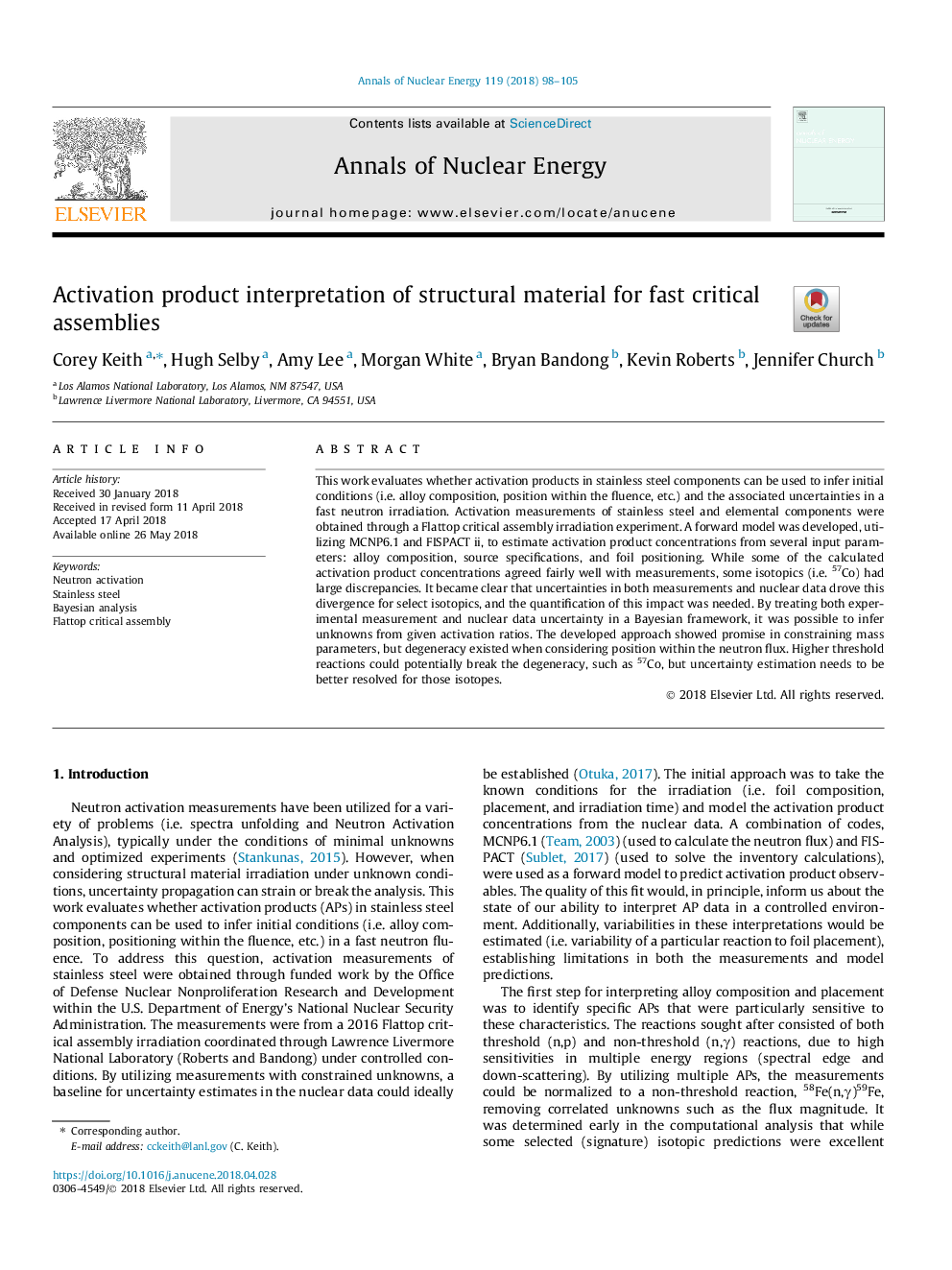| Article ID | Journal | Published Year | Pages | File Type |
|---|---|---|---|---|
| 8066909 | Annals of Nuclear Energy | 2018 | 8 Pages |
Abstract
This work evaluates whether activation products in stainless steel components can be used to infer initial conditions (i.e. alloy composition, position within the fluence, etc.) and the associated uncertainties in a fast neutron irradiation. Activation measurements of stainless steel and elemental components were obtained through a Flattop critical assembly irradiation experiment. A forward model was developed, utilizing MCNP6.1 and FISPACT ii, to estimate activation product concentrations from several input parameters: alloy composition, source specifications, and foil positioning. While some of the calculated activation product concentrations agreed fairly well with measurements, some isotopics (i.e. 57Co) had large discrepancies. It became clear that uncertainties in both measurements and nuclear data drove this divergence for select isotopics, and the quantification of this impact was needed. By treating both experimental measurement and nuclear data uncertainty in a Bayesian framework, it was possible to infer unknowns from given activation ratios. The developed approach showed promise in constraining mass parameters, but degeneracy existed when considering position within the neutron flux. Higher threshold reactions could potentially break the degeneracy, such as 57Co, but uncertainty estimation needs to be better resolved for those isotopes.
Related Topics
Physical Sciences and Engineering
Energy
Energy Engineering and Power Technology
Authors
Corey Keith, Hugh Selby, Amy Lee, Morgan White, Bryan Bandong, Kevin Roberts, Jennifer Church,
